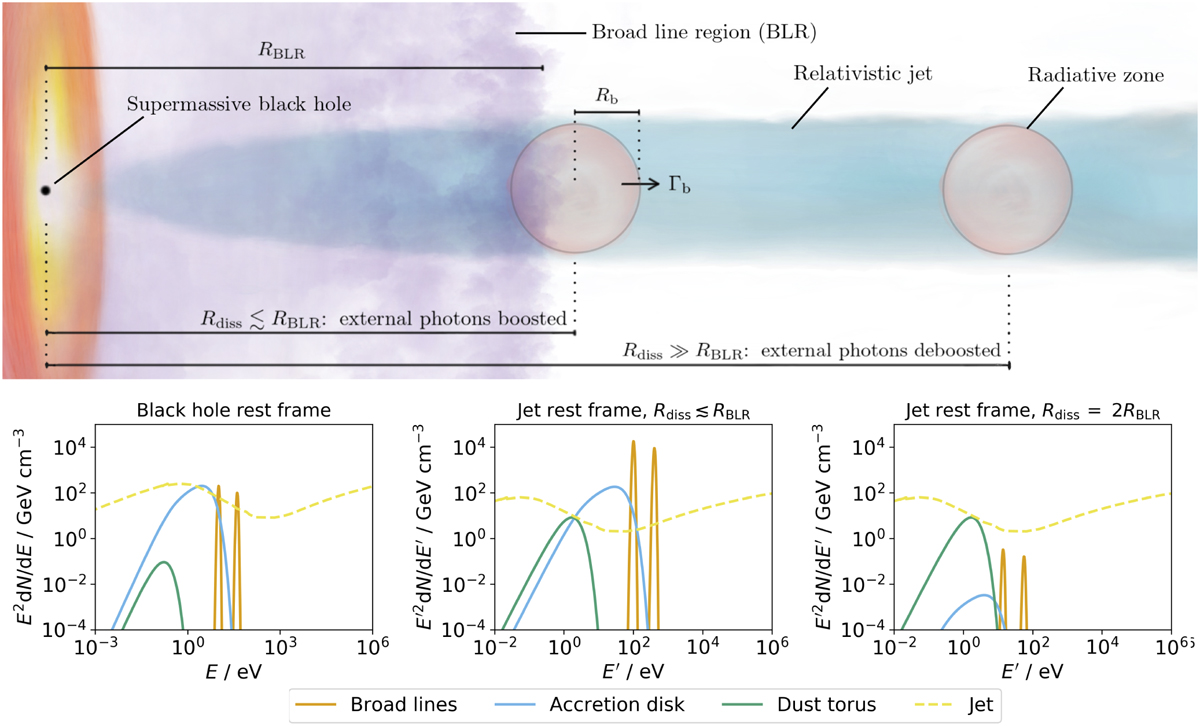Fig. 2

Download original image
Schematic representation of two possible geometries of the one-zone FSRQ model. The broad line region is represented by the purple clouds. In the case of the blob represented on the left, its proximity to the BLR implies a large relative Doppler factor, making the external fields appear highly boosted in the jet frame (compare left-hand plot, where the external fields are shown in the rest frame of the central engine, with the middle plot, where they are shown as energy density spectra in the jet frame). In the case represented on the right, due to the high dissipation radius Rdiss the BLR photons impinge more from behind and the external fields from the BLR are less boosted, as shown in the lower right plot. The relativistic boosting of these external radiation fields follows the treatment by Ghisellini & Tavecchio (2009). We note that on the left plot, the broad lines are isotropic in the black hole frame, while the disk emission is anisotropic except for the ~1% that gets isotropized through Thomson scattering. This explains why in the middle plot the broad lines get more highly boosted than the disk emission.
Current usage metrics show cumulative count of Article Views (full-text article views including HTML views, PDF and ePub downloads, according to the available data) and Abstracts Views on Vision4Press platform.
Data correspond to usage on the plateform after 2015. The current usage metrics is available 48-96 hours after online publication and is updated daily on week days.
Initial download of the metrics may take a while.


